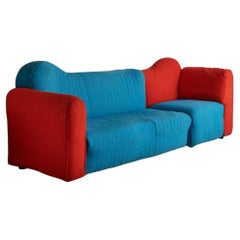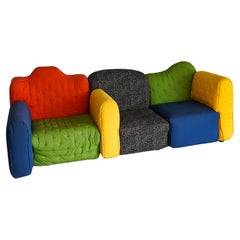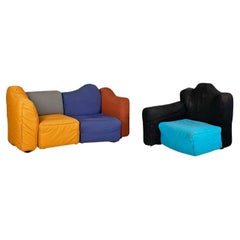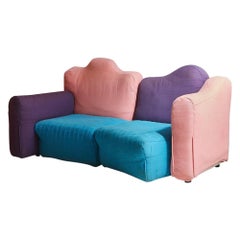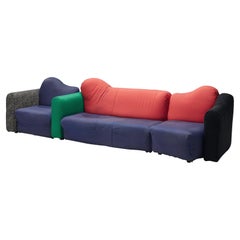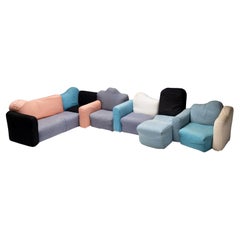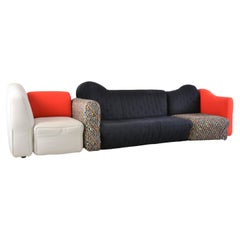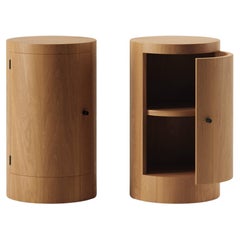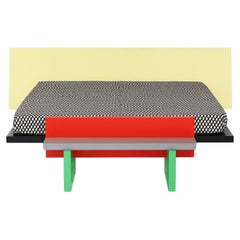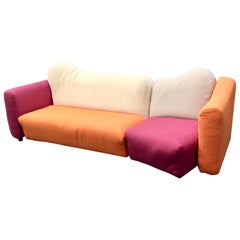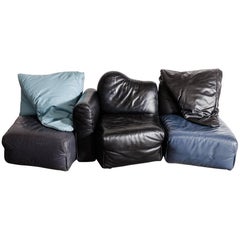Cannaregio Sofa
1990s Italian Post-Modern Sofas
Textile, Upholstery
Late 20th Century Italian Post-Modern Sofas
Foam
1990s Italian Post-Modern Sofas
Fabric, Wood
Vintage 1980s Italian Post-Modern Sofas
Fabric
1990s Italian Post-Modern Loveseats
Textile, Upholstery
Vintage 1980s Italian Post-Modern Sofas
Fabric
Vintage 1980s Italian Post-Modern Sofas
Fabric
Vintage 1980s Sofas
Cotton
Vintage 1980s Italian Post-Modern Lounge Chairs
Fabric
People Also Browsed
2010s South African Minimalist Pedestals
Hardwood
21st Century and Contemporary Italian Modern Beds and Bed Frames
Plastic
2010s American Mid-Century Modern Wall Lights and Sconces
Brass, Bronze, Enamel, Nickel
21st Century and Contemporary Italian Modern Side Tables
Crystal
Vintage 1970s Italian Lounge Chairs
Fabric, Rubber
Mid-20th Century Italian Scandinavian Modern Dining Room Chairs
Straw, Beech
Vintage 1980s Italian Post-Modern Side Tables
Steel
21st Century and Contemporary Italian Modern Sectional Sofas
Aluminum
Vintage 1960s Italian Mid-Century Modern Wall Lights and Sconces
Nickel, Brass
Vintage 1960s Italian Mid-Century Modern Sectional Sofas
Chrome
21st Century and Contemporary Italian Modern Screens and Room Dividers
Wood, Plastic
Vintage 1970s German Mid-Century Modern Sectional Sofas
Fabric, Upholstery, Plastic, Fiberglass
Vintage 1970s French Mid-Century Modern Shelves and Wall Cabinets
Wood
21st Century and Contemporary Italian Modern Bookcases
Wood, Plastic
Early 2000s Italian Contemporary Art
Felt
Vintage 1980s Italian Post-Modern Lounge Chairs
Upholstery
Recent Sales
20th Century Italian Mid-Century Modern Sofas
Cotton, Foam, Wood
Antique Mid-19th Century Italian Mid-Century Modern Sofas
Vintage 1980s Italian Post-Modern Sofas
Fabric
Vintage 1980s Italian Mid-Century Modern Sofas
Fabric, Cotton, Wood
Vintage 1980s Italian Mid-Century Modern Sofas
Fabric
1990s Italian Post-Modern Sofas
Fabric, Wood
Gaetano Pesce for sale on 1stDibs
Gaetano Pesce was of a generation of Italian architects who in the early 1960s rebelled against the industrial perfection of modernism by conceiving new furniture and objects that were at once expressive and eccentric in form; or you might say they were more like art than functionalist design.
Born in the picturesque coastal Italian city of La Spezia in 1939, Pesce was a precocious talent who could have forged a career as an artist but opted instead to go to Venice to study architecture because, as he has said, it was “the most complex of all the arts.” Rather than having new worlds opened to him at design school, however, Pesce found the rationalist curriculum oppressive in its insistence on standardization and prescribed materials and technologies.
Pesce wanted to explore the latest of both materials and technologies to create objects and buildings never before imagined, with what he called “personalities” that spoke to the issues of the day. He was keen to examine ways to diversify mass production so that each manufactured work could be distinct.
In 1964, Pesce met Cesare Cassina, of the forward-looking furniture company C&B Italia in Milan (now known as B&B Italia), for whom he would create many important designs, beginning with a collection of what he called “transformational furniture” — two chairs and a loveseat — made entirely out of high-density polyurethane foam. To make the pieces easy to ship and cost-efficient, he proposed that after being covered in a stretch jersey, they be put in a vacuum, then heat-sealed flat between vinyl sheets. Once the foam was removed from its packaging, the piece returned to its original shape — hence, the name Up for the series, which debuted in 1969.
In addition to these pieces, Pesce proposed for the collection something he referred to as an “anti-armchair,” which took the shape of a reclining fertility goddess, the iconic Donna.
Producing the piece's complex form turned out to be a technical challenge. Bayer, the foam’s manufacturer, deemed it impossible to accomplish. Pesce persisted and came up with a new procedure, demonstrating not only the designer’s key role in researching the nature and potential of new materials but also his vital importance in “doubting rules.” The Up chair and accompanying ottoman were born, and they were revolutionary in more ways than one.
In the early 1970s, Pesce began exploring one of his key concepts, the idea of the industrial originals. Employing a mold without air holes, and adding a blood-red dye to the polyurethane, he cast a bookcase that resembled a demolished wall, the rough edges of the shelves and posts resulting from fissures in the material made by trapped air.
Through his research into polyurethane, Pesce figured out a way to make a loveseat and armchair using only a simple wood frame and strong canvas covering as a mold. Since the fabric developed random folds during the injection process, the pieces were similar but not identical. Cassina named the suite of furnishings Sit Down and introduced it in 1975. By experimenting with felt soaked in polyurethane and resin, Pesce conceived I Feltri, another collection of armchairs introduced by Cassina in 1987.
Pesce went on to live a life that defied expectation and convention and along the way became one of the most seminal figures in art and design.
Find vintage Gaetano Pesce chairs, sofas, vases and more on 1stDibs.
Finding the Right sofas for You
Black leather, silk velvet cushions, breathable bouclé fabric — when shopping for antique, new or vintage sofas, today’s couch connoisseurs have much to choose from in terms of style and shape. But it wasn’t always thus.
The sofa is typically defined as a long upholstered seat that features a back and arms and is intended for two or more people. While the term “couch” comes from the Old French couche, meaning to lie down, and sofa has Eastern origins, both are forms of divan, a Turkish word that means an elongated cushioned seat. No matter how you spell it, sofa just means comfort, at least it does today.
In the early days of sofa design, upholstery consisted of horsehair or dried moss. Sofas that originated in countries such as France during the 17th century were more integral to decor than they were to comfort. Like most Baroque furnishings from the region, they frequently comprised heavy, gilded mahogany frames and were upholstered in floral Beauvais tapestry. Today, options abound when it comes to style and material, with authentic leather offerings and classy steel settees. Plush, velvet chesterfields represent the platonic ideal of coziness.
Vladimir Kagan’s iconic sofa designs, such as the Crescent and the Serpentine — which, like the sectional sofas of the 1960s created by furniture makers such as Harvey Probber, are quite popular among mid-century modern furniture enthusiasts — showcase the spectrum of style available to modern consumers. Those looking to make a statement can turn to Studio 65’s lip-shaped Bocca sofa, which was inspired by the work of Salvador Dalí. Elsewhere, the furniture of the 1970s evokes an era when experimentation ruled, or at least provided a reason to break the rules. Just about every area of society felt a sudden urge to be wayward, to push boundaries — and buttons. Vintage leather sofas of that decade are characterized by a rare blending of the showy and organic.
With so many options, it’s important to explore and find the perfect furniture for your space. Paying attention to the lines of the cushions as well as the flow from the backrest into the arms is crucial to identifying a cohesive new piece for your home or office.
Fortunately, with styles from every era — and even round sofas — there’s a luxurious piece for every space. Deck out your living room with an Art Deco lounge or go retro with a nostalgic '80s design. No matter your sitting vision, the right piece is waiting for you in the expansive collection of unique sofas on 1stDibs.
